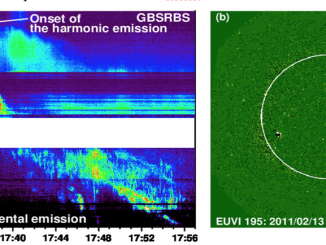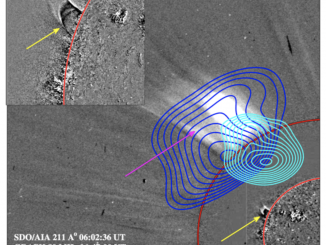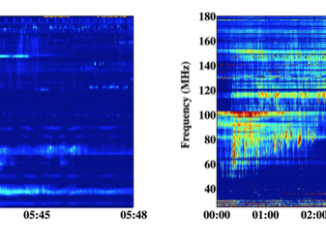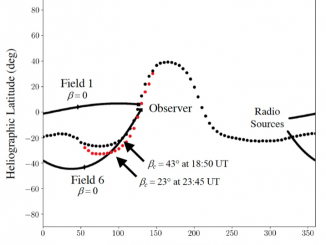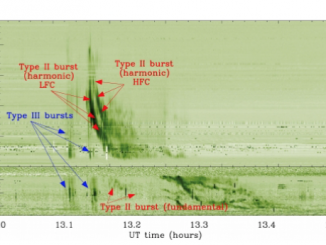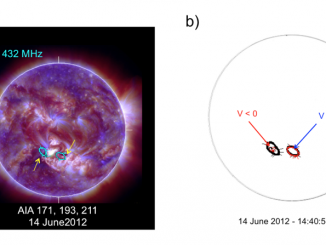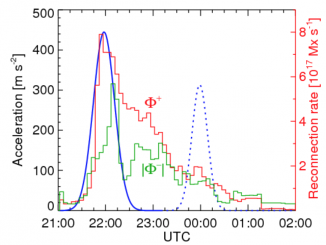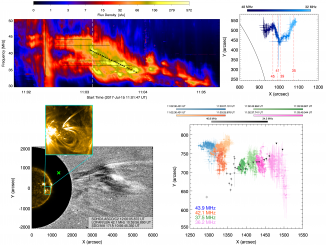Properties of High-Frequency Type II Radio Bursts and Their Relation to the Associated Coronal Mass Ejections
by A.C. Umuhire et al.*
Type II radio bursts are slow-drifting and long-lasting radio emission produced by nonthermal electrons accelerated at shocks propagating through the solar corona and interplanetary medium (Nelson & Melrose, 1985). The accelerated electrons generate Langmuir waves, which get converted into electromagnetic radiation by the plasma emission mechanism first identified by Ginzburg & Zhelezniakov (1958). Currently, there is a common understanding that type II radio bursts are produced by shocks formed ahead […]

